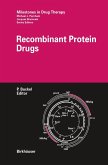Depression in children is characterized by variable symptomatology, saturated with multiple rudimentary fluctuating symptoms. All children with depressive disorders have mental, psychophysiological, and psychosocial ontogenesis disorders, but the dysontogenesis of these children is heterogeneous and depends on the nosological nature of the depression. Age-related pathomorphosis is determined by the age of the depression's debut. In younger school age, social functioning disorders, anxious hypothetical and asthenoneurotic manifestations are identified. As the child grows older, the spectrum of depressive phenomena expands with an "emphasis" on the classic depressive phenomenon. The picture of the disease is represented by hypothetical, neurotic disorders with dysphoric inclusions. In preadolescence, the clinical picture of depression is more structured, symptomatology is masked by manifestations of the negative stage of adolescent puberty crisis. Characteristic are depressive-dysphoric, anxiously dull and somatoalgic phenomena. The monograph is intended for general practitioners (pediatricians, psychiatrists, neurologists), psychologists, teachers, parents.
Bitte wählen Sie Ihr Anliegen aus.
Rechnungen
Retourenschein anfordern
Bestellstatus
Storno









